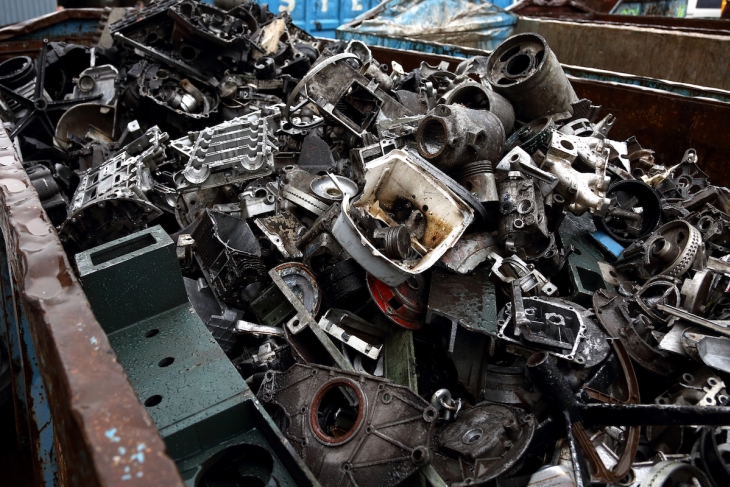The Fordham Institute’s new report, How Aligned is Career and Technical Education to Local Labor Markets? by Cameron Sublett and David Griffith, is a welcome addition to the literature on high school career and technical education. It notes that more people are spending their working years very close to the community in which they grew up, meaning more employers will have to source their workers from people who went to high school nearby. It asks to what degree those folks are trained to do the jobs that are and will be available in that community.
The authors don’t see much alignment between the jobs that are available and the ones that young people train for. According to the national data, “Over half the jobs are in four fields…yet, collectively, these fields account for only a quarter of CTE course concentrations.” It is true that students are more likely to train for jobs that are likely to be available in their local community. But, interestingly, that is most true when wages are low and less true when wages are high.
While these data are useful and I am glad we have them, I would caution the reader about making too much of them. The authors are right that they are the best data we have if our aim is to answer the question they were asked. But the results are potentially misleading if over-interpreted. In particular, the implicit criterion offered for competence in a high-need arena comes from the U.S. Department of Education: possession of a career and technical education “concentration.”
Typically, students achieve a concentration when they have taken a total of three courses constituting an approved sequence in a designated career-related program of study. But when the OECD issued a recent report on vocational and technical education (VET, and what we call career and technical education), it refused to include the data on participation it received from the federal education department because those data categorized children as VET students if they were concentrators. The OECD reasoned that, in the rest of the world, three courses in four years of education is not regarded as a serious VET program.
In most other countries, students are not awarded certificates of beginning competence in a trade or occupation unless they have done years of virtually full-time study in that line of work and have passed one or more very demanding practical and theoretical examinations designed to assess a high degree of initial competence. The time spent preparing for these occupations is typically divided roughly evenly between school and highly structured on-the-job training. Students who pass the exams are said to have a “qualification” in the line of work. The standards for the exams are set by employers in that field, so they know that such students have the requisite knowledge and skills to succeed.
That’s what authentic labor market “alignment” looks like. And frankly, it doesn’t bear much resemblance to anything we do here in the U.S.
Although Sublett and Griffith never actually make the claim that CTE concentrators are well-prepared for employment in their respective fields, I worry that casual readers may be left with that impression—and as a result, will drastically overestimate the percentage of high school students who graduate with the kinds of skills that employers are looking for.
In fact, fewer than 5 percent of high school students in most states leave with a qualification that is honored by employers. About 30 percent leave high school prepared enough to finish college. And the remaining 65 percent leave with only the diploma, which typically signifies almost nothing with respect to a student’s technical skills for any job.
Few American students leave high school with the skills needed to do semi-skilled, never mind skilled work. Most programs for “concentrators” provide hardly more than an introduction to a cluster of occupations, and leave pupils with little that would cause an employer to choose them over non-concentrators. Likewise, don’t be misled by statistics on the number of “industry certificate” holders. I’ve seen law enforcement and public safety programs that boast of these figures when the credential is nothing more than a CPR certificate that requires just a few hours of instruction—a pale comparison to the substantial training needed to be a police office or EMT.
Most high school career and technical education programs are not designed to result in career-ready graduates with strong technical skills. They are widely viewed as places for students whom teachers view as academically behind or disruptive. Districts shape these programs to keep kids in school, trying to find a way to keep their interest up and give them a taste of success, however modest. And success is often measured by how many participants go off to college, not some well-paying career for which they trained, and regardless of whether their college program had anything to do with the career cluster they studied in high school.
The countries with the most successful vocational education and training systems, however, do not view their programs as places for students who cannot do academic work. Nor do they view them as dropout prevention centers. Instead, leaders set fairly high minimum academic standards for admission, and the programs themselves contain a lot of academically challenging material. The reason that CTE has a much higher status in these countries than in the United States is because everyone knows that the school work is demanding and leads to jobs that are rewarding and pay well.
One of the Fordham study’s puzzling findings is that, although students take more career and technical education courses in fields for which there is local demand, this is less true when those available jobs are in higher-wage industries. I suspect the cause for this strange outcome is that lower-wage jobs also require less expertise. They include exactly the kind of work—low-skill work—that you can train for in high schools that count you as a career and technical education concentrator if you take three related courses in four years.
If you want serious training for skilled work in the United States, your best bet is your community college. And ironically, your best strategy for succeeding there is passing your high school’s academic courses, not enrolling in its CTE program.
There are, of course, exceptions—quality secondary school career and technical programs in some high schools in a few states. But they are not common. Not even close. Sublett and Griffith say that creating stronger programs in more places will take a new, very different kind of collaboration between local employers and local high schools and community colleges. Hear, hear. The usual kind, in which the employers advise the schools and the schools can take or leave the advice, will not do.
One of the major lessons from a lifetime of cross-national study of these issues is that the role of employers must be at least as strong as that of schools. Employers must be fully invested, set standards, approve curricula, play a key role in student assessment, and offer excellent on-the-job, highly structured learning programs. Only then will this country have strong career and technical education.

